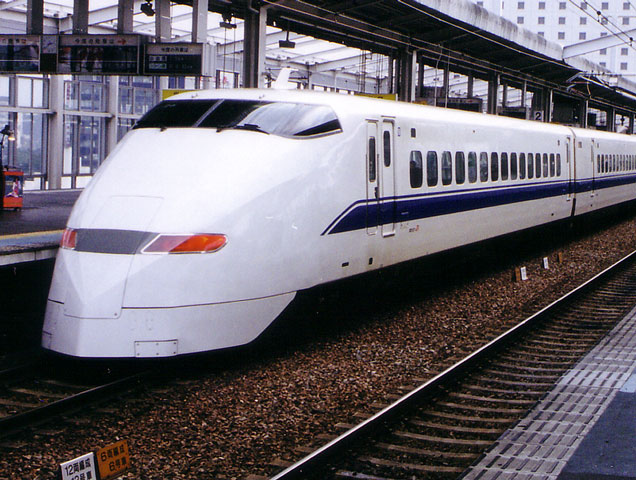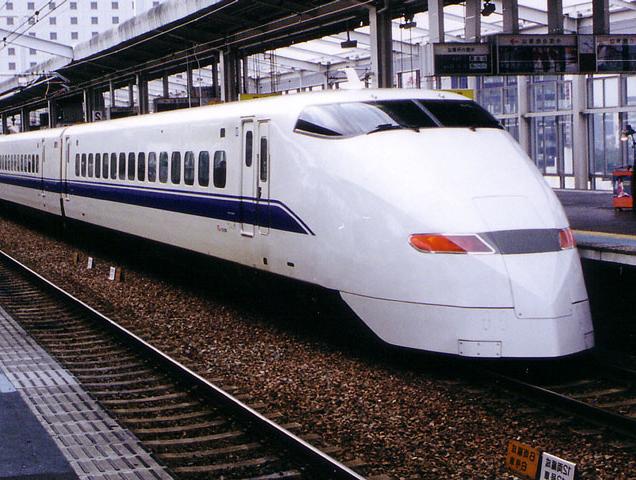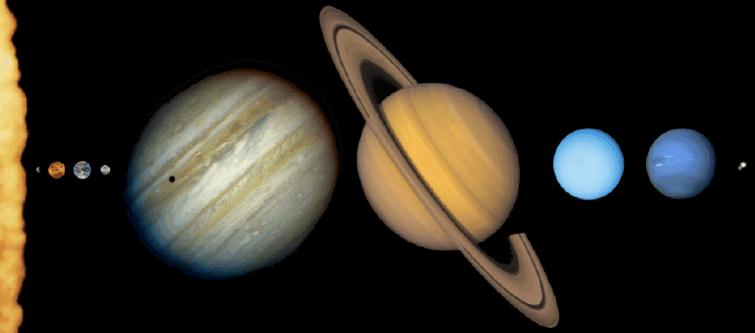
|
The Solar System |

|
The Solar System |
For the rest of the quarter we will concentrate on trying to understand how the Solar System formed, how it has evolved since its formation, and its (our)place in the Universe. In this context, at some point, we will address the questions of whether the Solar System and life is unique or whether there are other examples of these things in the Universe.
 |
The Solar System is located in the grouping of stars (galaxy) known as the Milky Way galaxy. The Milky Way is a just one of many billions of galaxies in the Universe. The Milky Way galaxy is a spiral (barred spiral?) galaxy which contains roughly 200 billion stars (e.g., see here for the external spiral galaxy M51 and an edge-on view of the Sombrero galaxy, M104). The visible material of the Milky Way is contained in a thin, rotating disk ( optical image and infrared image). The diameter of the disk is on the order 100,000 - 300,000 light years (1 light year = 6 trillion miles = 9.3 trillion kilometers) and has a thickness of several thousands of light years. |
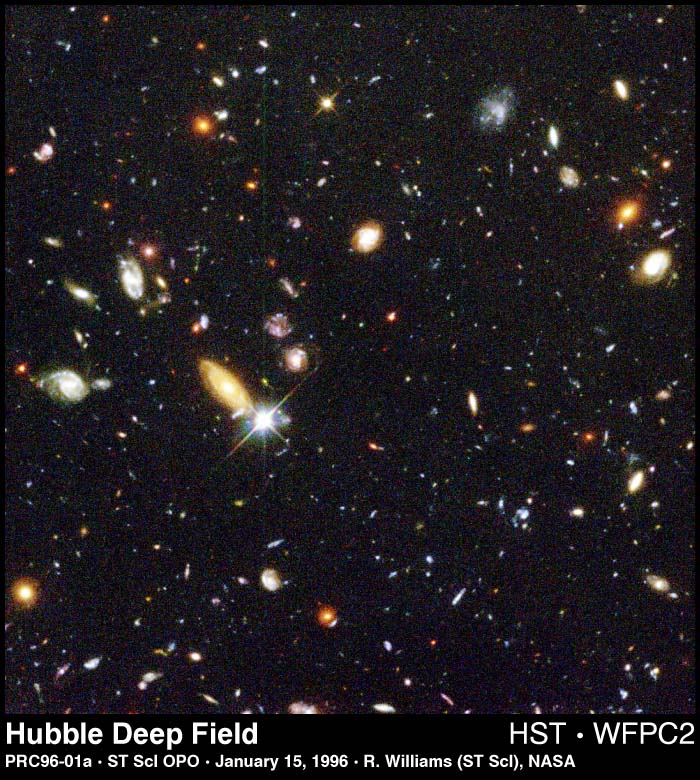
|
The appearance of the Milky Way is striking. In the center of the disk there is a bulge out of which extends several spiral arms. The Solar System is located in one of the arms, roughly one-half of the way from the center of the disk. The Solar System orbits the center of our Galaxy with a speed of roughly 220 kilometers per second or 800,000 kilometers per hour!
Comment -- The Milky Way galaxy has another component (in addition to the visible disk). There is a large spherical component to the Milky Way which is made up of nonluminous material ( Dark Matter). The Milky Way is dominated by this Dark Matter component. Perhaps 90 % of the Milky Way is nonluminous. This is also true for the Universe where as much as 95-96 % of the Universe may be nonluminous!!
The average mass of a star in the Milky Way galaxy is 30 % that of the Sun. The Sun is thus slightly larger than average, but not really that far out of line. The Sun is just 1 out of the two-hundred billion stars which make up the Galaxy. Given this, it is not unreasonable to suspect that the Solar System is not unique. We return to this issue a little later.
The Solar System displays a seemingly incomprehensible amount of diversity. However, on closer inspection, we see many regularities and patterns in the Solar System.
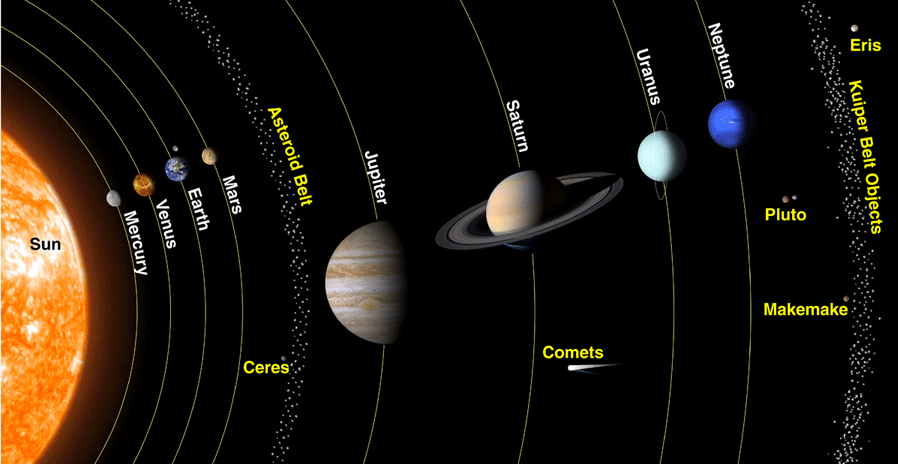 Terrestrial, Jovian, and Dwarf planets (and other objects in the asteroid and Kuiper belts). Click on the above picture to see a nice video on the scale of the Solar System: Youtube.
Dwarf Planets and Some Kuiper Belt Objects. An interesting object is Sedna. |
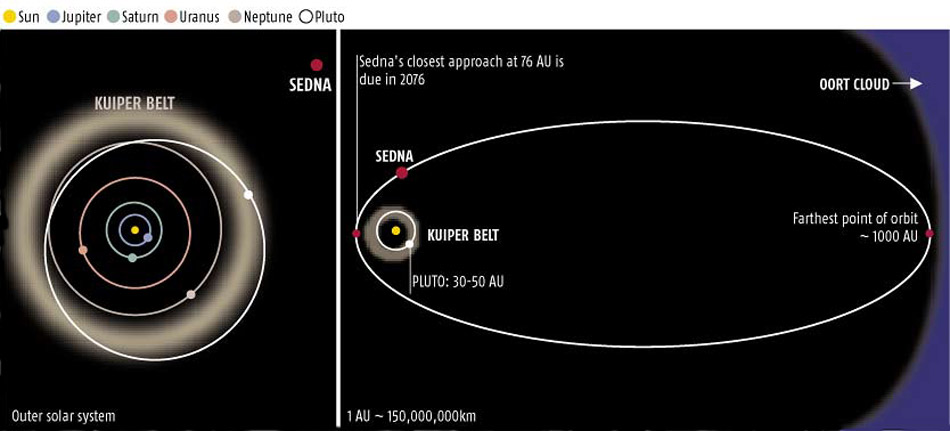
 |
 |
 |
 |
 |
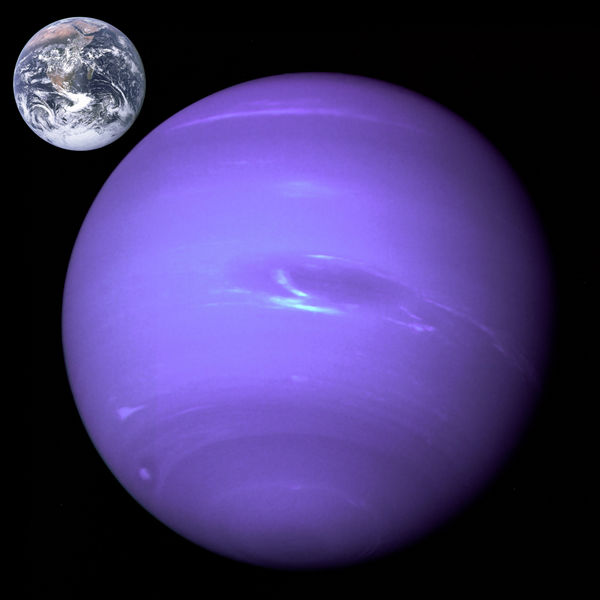 |

The principal ones are:
Secondary regularities are:
There are also some vexing properties which need to be explained, e.g.,
| a(A.U.) | Porb(y) |
| i(o) |
Prot(d) |
Obliquity(o) |
Mercury | 0.39 | 0.24 | 0.206 | 7 | 58.65d | 2 |
Venus | 0.72 | 0.62 | 0.007 | 3.4 | 243.01d | 177.3 |
Earth | 1 | 1 | 0.017 | 0 | 23h56m4.091s | 23.5 |
Mars | 1.52 | 1.88 | 0.093 | 1.8 | 24h37m22s | 25.2 |
Jupiter | 5.2 | 11.9 | 0.048 | 1.3 | 9h50m28s- 9h55m30s | 3.1 | Saturn | 9.54 | 29.5 | 0.056 | 2.5 | 10h13m59s-10h38m25s | 26.7 |
Uranus | 19.2 | 84 | 0.046 | 0.8 | 17.24h |
97.9 |
Neptune | 30.1 | 164.8 | 0.010 | 1.8 | 16.11h |
29.6 |
Pluto | 39.53 | 248.5 | 0.248 | 17.1 | 6.387d |
122 |
The planets show regularities in that they can be divided into distinct classes:
In tabular form, we have for the general properties of the planets:
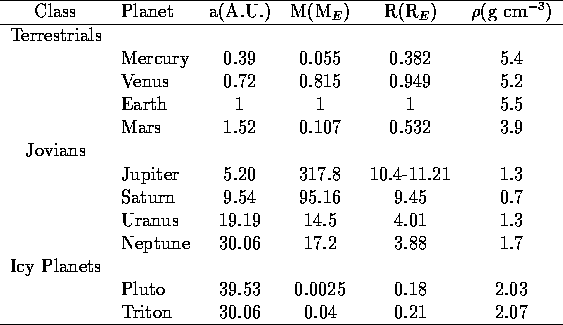
| Planet
a(A.U.)M(ME)
| ||||
Terrestrials | |||||
Mercury | 0.39 |
0.055 | 0.382 | 5.4 |
|
Venus | 0.72 | 0.815 |
0.949 | 5.2 |
|
Earth | 1 | 1 | 1 |
5.5 |
|
Mars | 1.52 | 0.107 | 0.532 | 3.9 |
|
Jovians | |||||
Jupiter | 5.2 | 318 | 10.4-11.2 | 1.3 | Saturn | 9.54 | 95.2 | 9.45 | 0.7 |
Uranus | 19.2 | 14.5 | 4.01 | 1.3 |
|
Neptune | 30.1 | 17.2 | 3.88 | 1.7 |
|
Rock/Ice | |||||
Pluto | 39.5 | 0.0025 | 0.18 | 2.03 |
Triton | 30.06 | 0.04 | 0.21 | 2.07 |
For the scale of things:
The regularities in the properties of the planets are tied to how far they are from the Sun. The Terrestrial planets are closer to the Sun than are the Jovian planets. In general, the Terrestrial planets are also smaller in diameter, less massive, and more dense than the Jovian planets. Let's look at the density for a second (to see why this is an important observation).
What do the observed properties of the planets imply about the chemical compostions of the interiors of the planets and the atmospheres of the planets?
Planetary Properties. II
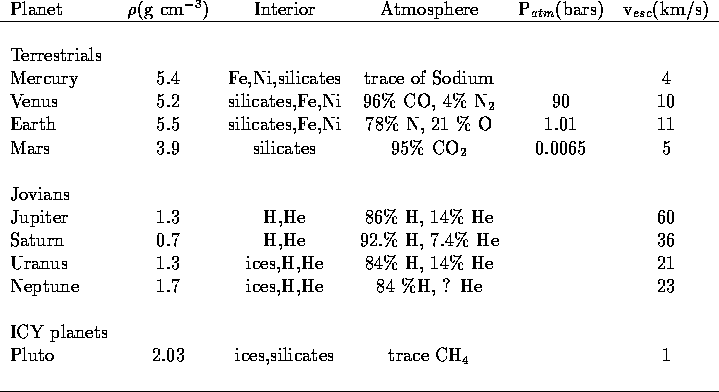
There are differences in the atmospheric pressures and escape velocities of the Terrestrial and Jovian planets. What do these properties tell us about the planets?
